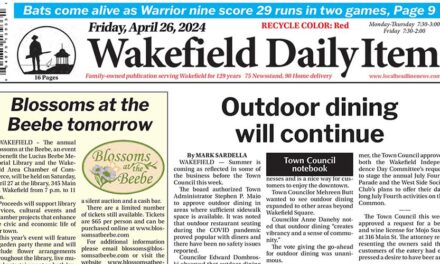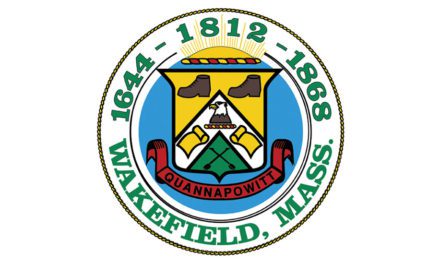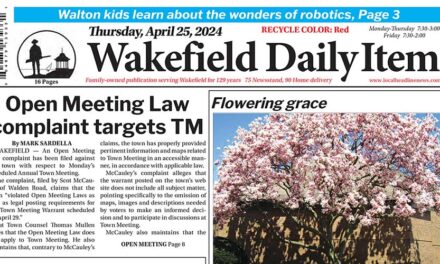This has been driving me crazy for years, so I was pleased when a member of the Board of Selectmen raised it at a recent meeting.
It relates to the intersection of Salem and Lowell streets (at the Prime Gas Station) as well as the intersection of Salem and New Salem streets. Both of these intersections have a fork-like configuration. West-bound vehicles at both intersections can either bear left or proceed straight. Vehicles waiting to proceed onto Salem Street have a stop sign.
The problem is that few of the west-bound drivers bother to signal their intentions.
Selectman Patrick Glynn described the frustration felt by many a motorist stopped at these intersections.
“You’re stopped at the STOP sign waiting to see which way they are going to go,” Glynn said. “They go straight and they don’t put their directional on. Sometimes they smirk. I think it’s a game with some of these people.”
Personally, I don’t give those drivers that much credit. I think most of them just don’t care or are too busy talking on the phone to focus on common courtesy.
Another problem is drivers who actually do signal their left turn at the Prime Gas intersection and then proceed to leave their signal on for the next half mile. Drivers stopped at the intersection of Salem and New Salem politely wait for the oncoming car to turn left and then watch in frustration as the oblivious left-signaling motorist continues straight along Salem Street.
But if you think that these mindless motorists would actually be found at fault for any accident caused by their signal sloth, think again. As I learned the hard way, if an accident occurs because you believed another motorist’s directional signal, chances are you – not the other driver – will be found at fault.
It happened to me at another intersection in another city. I was stopped at a T-shaped intersection. There was a line of cars coming from my right but only one coming from my left, an SUV signaling a right turn into the street from which I was pulling out. Foolishly believing that driver’s directional signal, I began inching out and focused my attention on the cars coming from the right.
But the driver in the right-signaling SUV wasn’t turning right and she plowed straight into my left front fender. From her open window through which she had been blowing her cigarette smoke, she screamed, “You pulled right out in front of me!”
I silently pointed to her right directional signal, which was still rhythmically blinking away even as it kissed my fender.
She was contrite and apologetic throughout our exchange of papers. After all, it was she who had hit me and it was she who had gone straight despite signaling a right turn. So you can imagine my shock a few weeks later when both insurance companies agreed that I had caused the accident. The reason? My “failure to proceed with due caution from a traffic control signal or sign.”
I knew this was going to cost me thousands of dollars in surcharges over the next six years, so I decided to appeal it.
I thought I had a pretty good case. I had in fact “proceeded with caution” based upon my belief that the right-signaling vehicle was indeed turning right.
But I also thought I had another ace in the hole. One of the 20 “Standards of Fault” that Massachusetts uses to determine responsibility for an accident is “Failure to signal.”
If a motorist in an accident can be found at fault for passively failing to signal, I reasoned, then a driver actively issuing a false signal should be just as much at fault, if not more so.
But I soon learned that reason doesn’t enter the equation.
The hearing officer didn’t buy my argument and I’ll be paying surcharges for another four years.
So, yes, it would be nice if west-bound motorists on Salem Street signaled their true intentions. But even if they do signal and you believe them and an accident occurs, chances are you will pay, not them.
Happy motoring.





